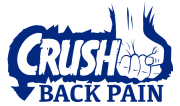Subscribe to the Crush Back Pain Youtube channel
Core stability is exactly what it sounds like. Stability of the core. The core is the trunk. Particularly the area around your waist. A stable core is required in order to effectively use the arms and the legs. The spine, especially the lower back and pelvis region are built to function as a rigid, solid base for extremity movement. From sprinting, to throwing a baseball or football, to picking up a child a stable spine and trunk are required.
Sure, you could do all of these activities with a loose, sloppy core. But pain will eventually result.
Core stability is especially important if lower back pain is present or if there is a history of lower back pain.
Anatomically the L4-5 and L5-S1 lumbar levels allow the most motion in the lumbar spine. More motion means more wear and tear. The simple fact that these two lower lumbar motion segments allow more movement is the reason that ninety percent of the time it’s one of both of these levels that show disc herniations, disc bulges, and facet joint arthritis on imaging. These levels move more during everyday life, so naturally have more wear and tear and age related changes. These changes show up on imaging.
The extra movement that results in more wear can also lead to tissue micro-trauma, inflammation, and pain. Training the trunk musculature to effectively stabilize the lower back during activity decreases pain caused by aberrant motion of the lower lumbar spine.
Increasing the stiffness of the trunk musculature is like cinching up your own built in back belt and controls excessive motion of the lower back during activity. Research proves that core stability exercise is more effective compared to general exercise to decrease lower back pain and to improve function.
The key is to train the lumbar stabilizers effectively without overloading the lumbar tissues.
There are countless core exercises that activate the musculature effectively, but many of them place too much load through the discs, joints, and tissues of the lumbar spine. When people are training the core with exercises that overload the spine the back pain will not go away, and may even get worse.
If lower back pain is present or if it comes and goes it’s especially important to begin with core stability exercises that we know will train the musculature without placing excessive load through the discs, joints, and ligaments. As trunk muscles stiffen up and stabilize the lower back pain and inflammation will decrease. As this occurs the training envelope with increase, meaning the back will tolerate more activity and higher level training without pain. As core stability training is progressed the ability of the lumbar tissues to attenuate load is increased. Gradually pain fades away and function is optimized.


